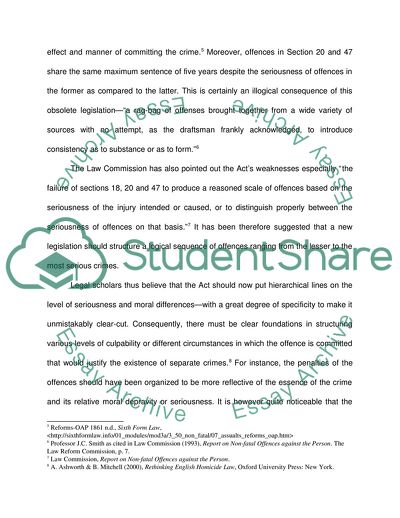Cite this document
(The Offences Against the Person Act 1861 Essay Example | Topics and Well Written Essays - 1500 words - 2, n.d.)
The Offences Against the Person Act 1861 Essay Example | Topics and Well Written Essays - 1500 words - 2. https://studentshare.org/law/1732257-criminal-law
The Offences Against the Person Act 1861 Essay Example | Topics and Well Written Essays - 1500 words - 2. https://studentshare.org/law/1732257-criminal-law
(The Offences Against the Person Act 1861 Essay Example | Topics and Well Written Essays - 1500 Words - 2)
The Offences Against the Person Act 1861 Essay Example | Topics and Well Written Essays - 1500 Words - 2. https://studentshare.org/law/1732257-criminal-law.
The Offences Against the Person Act 1861 Essay Example | Topics and Well Written Essays - 1500 Words - 2. https://studentshare.org/law/1732257-criminal-law.
“The Offences Against the Person Act 1861 Essay Example | Topics and Well Written Essays - 1500 Words - 2”. https://studentshare.org/law/1732257-criminal-law.


